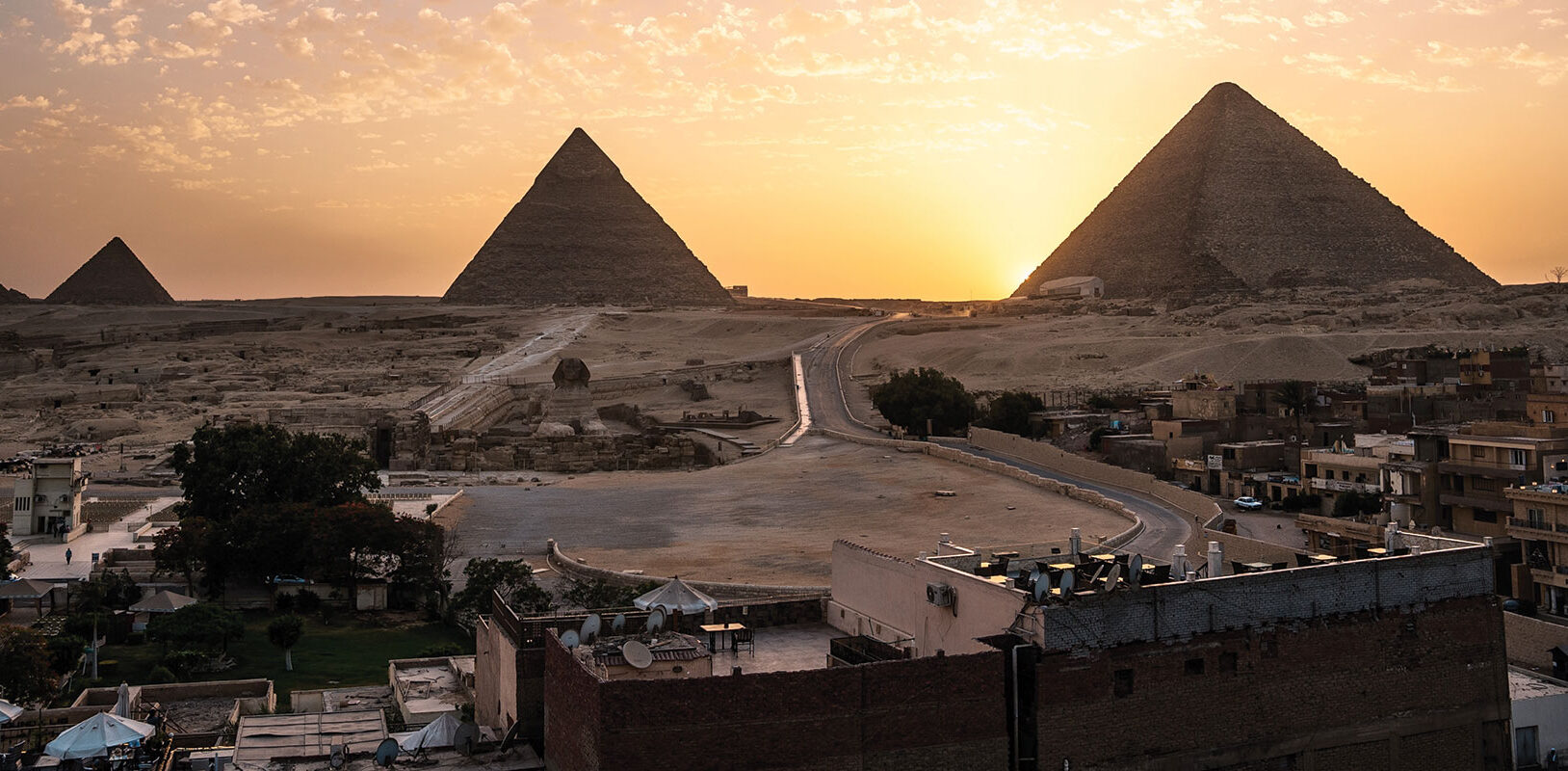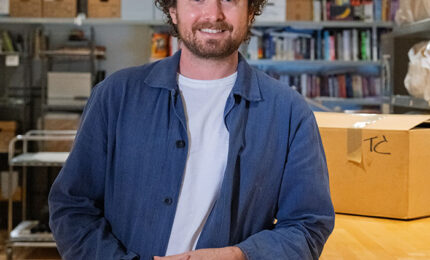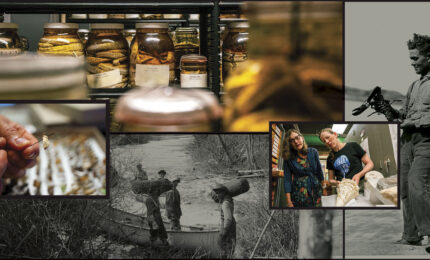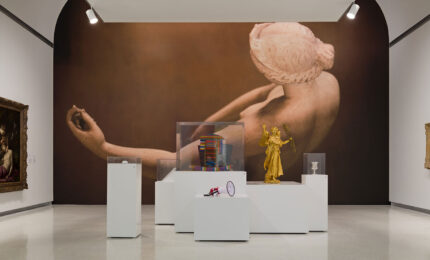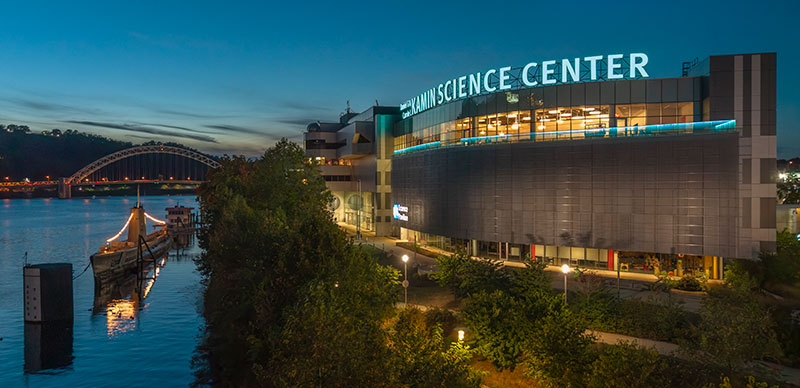As a boy, Mostafa Sherif would climb onto the flat roof of his house in Giza City, Egypt, and stare at the Great Pyramid rising from the west bank of the Nile River. Tourists from around the world flocked to see the 454-foot-high pyramid, one of the Seven Wonders of the World.
Sherif never took for granted the towering antiquities just a short walk away. His fascination with ancient culture only deepened when, at 15, he went on a school field trip to the Citadel of Cairo, the seat of government from the 13th to 19th centuries. The fortress had brass windows, stone walls—and, most importantly to his future career—decorative wooden ceilings.
“I always had a spirit of history,” he says of his upbringing in Egypt. “I had a continuous and direct communication to monuments and archaeology.”
That was the spark for his esteemed career as a conservator of ancient wood, propelling him to work on precious objects at the National Museum of Egyptian Civilization and historic sites in Egypt.
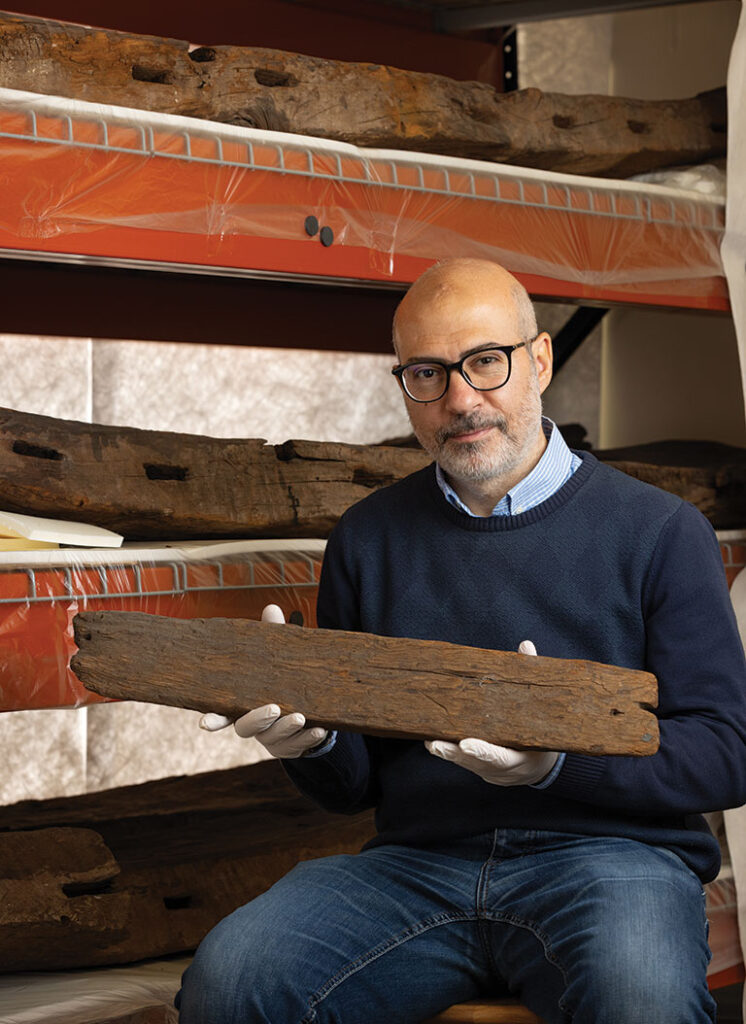
That expertise, in turn, has brought Sherif to Pittsburgh as a new conservator at Carnegie Museum of Natural History, where he will work on one of its most beloved objects—the 4,000-year-old funerary boat excavated from Dahshur, Egypt.
“The [Dahshur] boat is now deinstalled and stored, so I will use this opportunity to study and observe all details of the boat to improve its mechanical properties so it can live in the future in good condition,” Sherif says.
The museum took apart the famous boat—one of only four in the world—so he can analyze, preserve, and reassemble it. The Dahshur boat will be a showpiece for the museum’s Egypt on the Nile exhibition, slated to open in 2026—a highlight of human interaction with the Nile River and the ancient cultures that still inspire us today.
The Perfect Hire
Like a good doctor, a good conservator should first do no harm. The idea is to protect the integrity of the object with as little intervention as possible.
For example, Sherif points to one of the coffins in Sennedjem’s tomb in the museum’s Walton Hall, where there are some gaps. It would be easy to use modern materials and paints to hide the gaps, but that would be anathema to his job. He calls it forgery.
“We don’t need to make it beautiful,” he says. “I add the minimum intervention.”
That will be his approach to the Dahshur boat, where Sherif will do the painstaking work of inspecting some three dozen planks of cedar wood, inch by inch, documenting decay and damage and coming up with a treatment plan.
“I can’t imagine a more perfect candidate for this project, just as far as his work experience and educational background,” says Lisa Haney, Egyptologist and assistant curator of the upcoming Egypt on the Nile exhibition.
Sherif has a doctorate degree in structural conservation of historical wood from Cairo University and has worked on many large objects, which was a prerequisite for leading the conservation of the boat, as well as working on a coffin that has never been on display before.
“Mostafa’s a great hire,” says Gretchen Anderson, head conservator at the museum. Some conservators, like herself, are generalists. Even wood specialists often work on furniture, not ancient boats.
I will use this opportunity to study and observe all details of the boat to improve its mechanical properties so it can live in the future in good condition.
–Mostafa Sherif, conservator at Carnegie Museum of Natural History
Sherif’s resume includes another unique credential: He’s already worked on two of the four sister boats from the same Dahshur excavation.
“Archaeological wood is particularly tricky,” Haney says. “This wood has been buried in the desert for thousands of years. The dry climate really desicates it. It becomes extremely fragile and falls apart very easily.”
Anderson says excavating wood and exposing it to a new environment further weakens it. “Each plank is very susceptible to changes in relative humidity, to changes in temperature, to increased oxygen, and will begin to decay,” she says.
The exhibition history in Pittsburgh also damaged the museum’s boat. Although it was relatively stable while displayed in an exhibition case from 1907 to 1956, it was out in the open for the next 20 years. People handled it and even etched graffiti into it, Anderson says. “There are stories of people climbing into the boat. Objects were thrown into it.”
The boat was back in a display case in Walton Hall of Ancient Egypt since 1990, but the museum dismantled it during the spring of 2022 because of preservation concerns during roof repairs.
Sherif’s experience inspecting the two Dahshur boats in Egypt will inform the conservation of the one in Pittsburgh. In 2018, he was part of the committee who studied the conditions of the boats before they were transferred from the Egyptian Museum in the Tahrir area, Cairo, to the National Museum of Egyptian Civilization, where he had been conservator since 2013, a post he held until he came to Pittsburgh.
The sophisticated construction of the Dahshur boats never fails to impress Sherif. “The ancient Egyptians used wooden dowels and joints to connect the planks to each other,” he says, adding that it makes the planks safer and more flexible with movement.
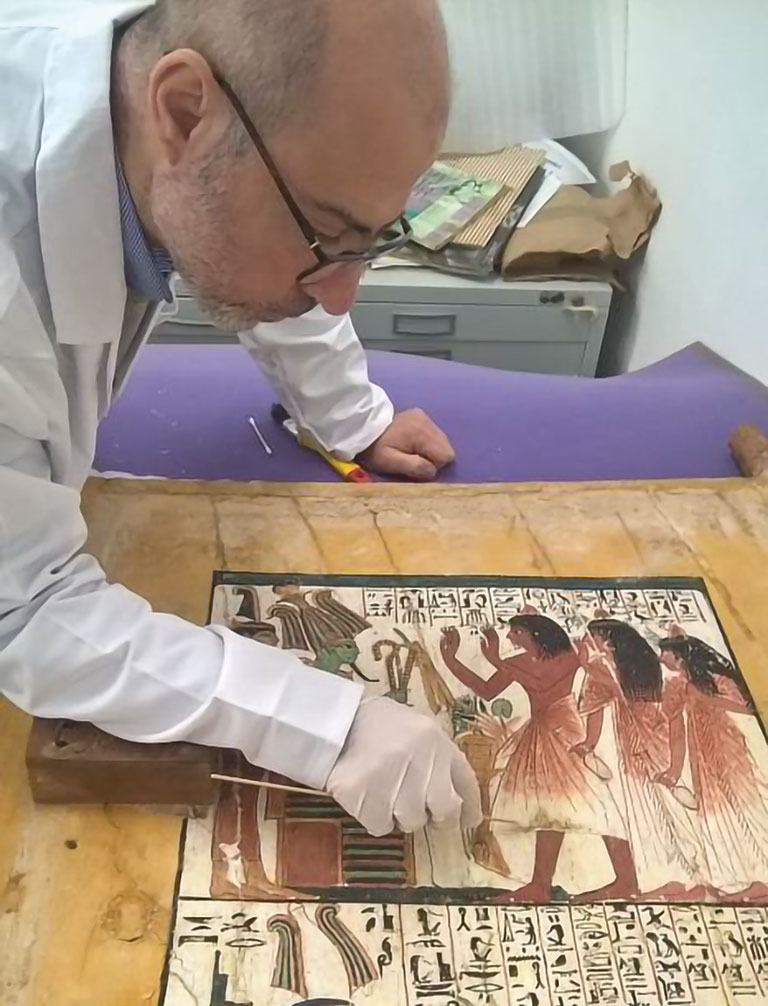
Perhaps his most significant conservation project in Egypt was the Singem Tomb Door, with its roughly 4-foot-high panels featuring intricate figure paintings and hieroglyphs. The door had cracks, deteriorating layers of paint, missing parts, and was covered with dirty film. Sherif painstakingly repaired and cleaned the ancient wood by hand, using cotton swabs dipped in chemicals, for example, to gently remove the dirt and bring the original colors back to life.
Yaser Yehya Amin Abdel-Aty, Sherif’s PhD adviser and professor of structural and architectural conservation of historic buildings at Cairo University, says Sherif’s skill restored the tomb door to its former glory and made it a main attraction at the museum. “It’s an archaeological masterpiece,” Abdel-Aty says.
Sherif also worked on the 142-foot-long Khufu boat, or sun boat, one of the oldest planked vessels in the world that is considered a masterpiece of ancient Egyptian woodcraft. He inspected it, created a first-aid plan, and consulted on its transfer from a museum building in Giza Plateau to the Grand Egyptian Museum.
I can’t imagine a more perfect candidate for this project, just as far as his work experience and educational background.
Lisa Haney, Egyptologist and assistant curator of the upcoming Egypt on the Nile exhibition
In Pittsburgh, Sherif also will be working on the soot-covered coffin of Natjaukhonsurudj, an individual who lived during the 25th or 26th Dynasty in ancient Egypt. Henry J. Heinz had the coffin as part of his personal museum and loaned it to the Museum of Natural History in 1898 before it was officially gifted. Sherif will work with Kea Johnston, a coffin specialist, to remove layers of soot—a vestige of Pittsburgh’s smoky industrial history. They will also examine and conserve inscriptions, decoration, and construction of the coffin.
Sherif says restoring the coffin will be an even bigger challenge than the boat. “It is in difficult condition, not only covered in soot with water damage, but also structural damage.”
The coffin of Natjaukhonsurudj has never been on view before. The museum selected it for Egypt on the Nile because it’s the only coffin that came into the museum’s care without its occupant. The museum will be removing the coffins currently on display in accordance with its pending policy to no longer display human remains.
“We’re excited to have someone to take care of this piece and also to be able to share something new with the museum’s visitors,” Haney says.
Conserving in Front of an Audience
In Pittsburgh, the public can look through a protective glass partition to observe Sherif work as part of a “visible lab.” The lab will be part of The Stories We Keep, a temporary exhibition at the museum that will open in March 2024. Museum conservators will answer questions from visitors about how they preserve valuable artifacts, and visitors will be able to try out conservation techniques using microscopes and black lights to detect previous repairs on simulated objects.
“We want visitors to understand all that goes into this and know that real science is happening here,” says Sarah Crawford, the museum’s director of exhibitions.
On a recent morning, a group of girls from an art club in Hadley, Pennsylvania, in Mercer County, watched Sherif as he used his handheld microscope to analyze a paddle from the Dahshur boat.
“Curious, are you?” asks Anderson.
“Very,” answers 17-year-old Nevaeh Sturgin.
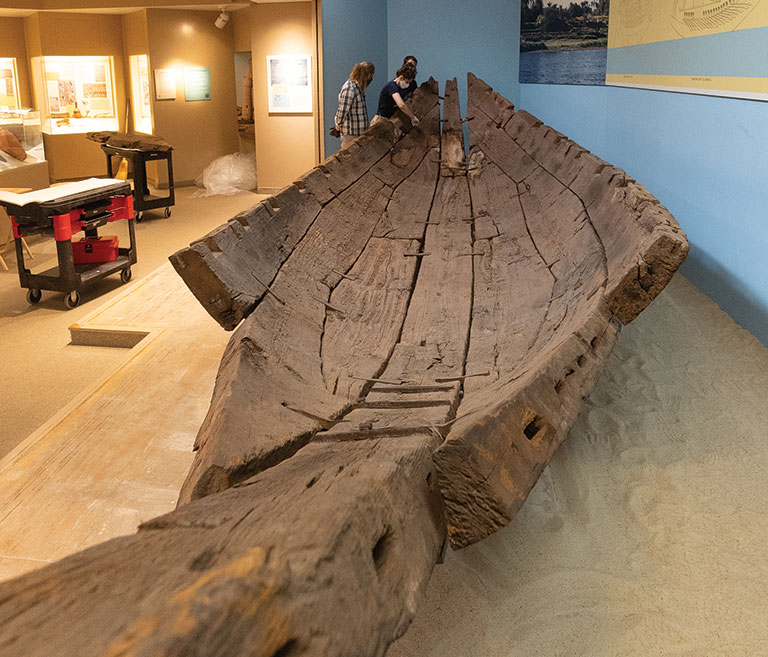
Sherif shows the girls the handheld digital microscope that helps him write a detailed analysis of every plank. This type of technology wasn’t available the last time the boat was preserved in the early 1990s.
Anderson explains to them that the Dahshur boat came to Pittsburgh in 1901 thanks to the deep pockets of Andrew Carnegie.
“How much did it cost?” Sturgin asks.
“Andrew Carnegie paid $476,” Anderson answers. Even with inflation—it would cost about $17,000 in today’s currency—it was a terrific bargain for an incredibly rare object.
“It’s amazing to see this firsthand,” says Rachael Harold, the group’s art teacher and art club adviser.
Applying treatments and reassembling a priceless artifact can be a high-wire act, especially when you’re doing it in front of a real-life audience. Not everyone is comfortable doing that, Crawford says, but Sherif is both confident and enthusiastic. “It’s a very brave idea,” he says with a smile.
Sherif never lost the wonder of these antiquities and the people who created them. The kid on the rooftop, looking out at the Great Pyramid, is now ensuring that people in far-flung times and places get to share in that fascination with the ancient past.
“It’s fantastic,” he says. “The people in the past—their scientific skills were so clever. You can still learn from them today.”
